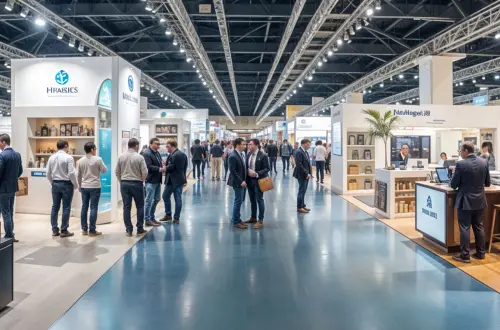A Brief Guide to Making a Business Travel Planner in 4 Parts
Last week we touched upon the sensitive subject of shipping and installing your booth, which is where we danced around the topic of meticulously planning the process from the very beginning. It’s a point that applies to the entire work trip as an endeavor and reminded us how much valuable it is to have a business travel planner at the ready to reference. Organisation is key when you’re at the helm of a business trip – there are numerous cogs and gears that go into making it to a trade fair or a conference. You never know when you’re going to need to reference certain information at the fly and it’s far more efficient to have a central body to consult.
You can go as deep and complicated as you want, but we suggest you have four main components to your business travel planner:
A Budget Section
It all starts with your budget. You need to have a planned that extends to every single aspect from shipping costs, rental costs, transportation costs, admission costs, hotel accommodation costs and everything in between. Ideally you should start the section with a detailed, planned budget, which is going to be your point of reference when it comes to making the actual purchases. Then once you being spending money, you’ll log the actual sums and be able to compare how you’re keeping up and where you need to tighten the corners. Budgeting a business trip is one of the biggest and hardest tasks to accomplish.
Another tip – make sure you keep all invoices associated with the business trip filed in one place be they printed out in a physical folder together for perusal or labelled and sorted together in one folder on your computer and/or in your email. We suggest both for greater flexibility.
A Hotel Accommodation Section
Hotel accommodation comes second in importance, because your hotel functions as headquarters for your team while you’re on assignment. There’s much that goes into your decision where you’re going to stay and what needs to be arranged. How important is it to be physically near the venue? Do you mind commuting? Do you need additional meeting facilities on site? Can you spare the additional funds for commutes in terms of hiring taxis or renting out cars? How can you tick off as many requirements and staying within budget?
It all has to be decided and written out to give you a clear idea what hotel deals are good and what are completely off the table. This section should also contain the contact information of managers and relevant staff for when you need additional services from the hotel be it the business centre or storage. It’s also where you should feature any appointment and agreed-upon conditions with the hotel management.
A Trade Fair Section
Simply put – you need to know the details around the fair you’re going to attend. What does this entail? On the easiest setting is your understanding of the logistics – the location of the venue, how to get there in the fastest way, the opening hours of the event and where your booth is located on the show floor. If you’re driving in a rented car, what is the parking situation. Do you need any access to facilities for the disabled? Are you part of the programming? Do you have meetings that you have lined up prior to arriving? How are you going to set up at the trade fair and what services do you need to cross off this task?
Having a section that maps out everything from the big questions to the smallest details prepares you for every possibility during the day, so you’re not caught off guard by a situation or a question and don’t lose any valuable time. We have heard of companies that perform extensive analysis of the show floor to identify strong competitors close to the booth and work towards countering their messaging and sales pitch approach.
A Weather Section
It may not seem important, but having a minute weather report as your business trip draws nearer is crucial, especially if you’re transporting a booth and promotional materials. Knowing what the weather is going to be like, when you intend to feature a product in an outdoor exhibit or as part of a demo area is going to be crucial in how you approach it and what precautions you need to take in order to be successful. A lot less dramatic is the concern for what clothing to pack, which might not seem serious, but is certainly of import when it comes to conveying the right image.


